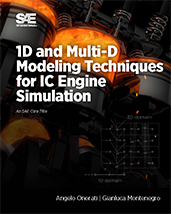Journal Article
Fluid Dynamic and Acoustic Optimization Methodology of a Motorbike Intake Airbox Using Multilevel Numerical CFD Models and Experimental Validation Tests
2013-09-08
2013-24-0070
In this work a multilevel CFD analysis have been applied for the design of an intake air-box with improved characteristics of noise reduction and fluid dynamic response. The approaches developed and applied for the optimization process range from the 1D to fully 3D CFD simulation, exploring hybrid approaches based on the integration of a 1D model with quasi-3D and 3D tools. In particular, the quasi-3D strategy is exploited to investigate several configurations, tailoring the best trade-off between noise abatement at frequencies below 1000 Hz and optimization of engine performances. Once the best configuration has been defined, the 1D-3D approach has been adopted to confirm the prediction carried out by means of the simplified approach, studying also the impact of the new configuration on the engine performances.

